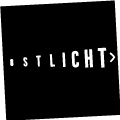ARCHIV
Industry
Artists
Anatoliy Babiychuk
Carla Bobadilla
Edward Burtynsky
Elisabeth Czihak
Michael Goldgruber
Birgit Graschopf
Katharina Gruzei
Cornelia Hauer
Ernst Logar
Walter Niedermayr
Markus Oberndorfer
Sascha Reichstein
Thomas Ruff
Margherita Spiluttini
Max Wegscheidler
OstLicht gallery is located on the former campus of the Anker Bread Factory, i.e. at a site that was used industrially for a long time, its original use having changed over the past years. With the exhibit »Industrie« (Industry), OstLicht commemorated the history of its own location, offering an examination of aspects of industrial production by presenting fifteen contemporary artistic positions.
Usually, the methods of industrial production remain invisible – for those who do not work there, factories are inaccessible places. The production of goods has also vanished from the public perception because numerous factories in Austria have been closed during the past decades and manufacturing having been outsourced to other countries. Former industrial compounds decay or are rededicated to other purposes.
The artists in this exhibition examined the following questions, among others: what does factory work look today, and how has it changed? How does it take place in different geographic regions? How is working at machines inscribed upon the body of the workers and their movement sequences? Which effect does industrial production have on the landscape and the ecosystem? What do these spaces look like after work has been removed from them?
In her series »Ankerbrotfabrik« (Anker Bread Factory, 2009), Elisabeth Czihak shows spaces which have lost their original function. We see empty work-floors before they a new purpose, when only relics like machines, heaps of flour and warning signs remind the viewer of the former production site for victuals.
The many workers Edward Burtynsky shows in »Manufacturing China« seem like playing figures in the great »theater« of industry. He was able to take photographs of the seemingly endless production halls in several Chinese provinces, where thousands of workers produce mobile phones, shoes or textiles.
For »Maschinen« (Machines, 2003–2004), Thomas Ruff went through the picture archive of a tool and machinery factory. He selected a small part of about 3,000 glass negatives, prototypes of sales brochures, and subjected
them to a digital and pictorial transformation: scanned and exposed in a new colorful guise, the small negative discs became large-scale images.
Margherita Spiluttini documents »alpine hybrid formations between nature and culture« in her series »Nach der Natur« (After Nature, 1991–2003). These are photographs of cement mills, stone quarries or the Erzberg, showing how human intervention has shaped the landscape.
Curated by Karin Jaschke
IMPRESSIONS FROM THE OPENING
















